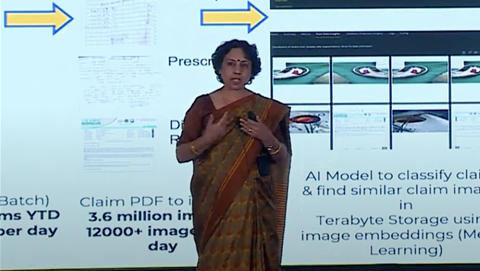Enterprise cloud strategies have evolved over the past decade. Initially, organisations adopted cloud computing to reduce infrastructure costs and improve scalability. However, the cloud is no longer just about infrastructure, it has become a core component of business transformation, enabling AI-driven insights, real-time data processing, and industry-specific innovation.
As cloud adoption matures, enterprises face new challenges. Data gravity, latency concerns, security risks, and the need for greater interoperability. Rather than relying on a single cloud provider, organisations are adopting multicloud architectures for better control over workloads, compliance, and performance optimisation.
A major catalyst for the multicloud trend has been cross-cloud partnerships among major cloud providers. Enterprises no longer view the cloud as a one-size-fits-all solution but as an interconnected ecosystem where workloads need to move between providers.
Oracle Cloud Infrastructure’s executive vice president, Mahesh Thiagarajan, told iTnews Asia, that over the years, cross-cloud collaborations have evolved beyond basic connectivity to address one of the biggest challenges enterprises face - latency.
While fiber interconnects have improved cloud-to-cloud communication, even small physical distances between workloads, such as those in separate buildings within the same region, can introduce latency that impacts performance-sensitive applications, Thiagarajan said.
This has led to a shift where cloud providers are not just improving network links but also co-locating workloads within the same data centers to reduce bottlenecks, he added.
Cloud providers are strengthening partnerships to enable multicloud integration and latency for enterprise workloads.
Along similar lines, Oracle has partnerships with AWS, Microsoft Azure, and Google Cloud to enhance OCI’s value proposition.
AI models work best when in closest proximity to data
The rise of AI-driven applications is changing cloud strategies. Enterprises focus on how to run AI models efficiently without excessive infrastructure costs. The challenge is not about processing power but about proximity - AI models are effective when they operate close to the data they rely on.
Thiagarajan mentioned observing two AI-related patterns: some organisations push data asynchronously for model training and batch processing, while others require near real-time inferencing where data must be processed instantly as it arrives.
In both cases, businesses want database technology positioned as close as possible to AI workloads.
Thiagarajan said, “On the data side, Oracle integrates AI directly into databases, including MySQL and Oracle Database, allowing inline AI models to run on the same compute layer as stored data.”
This eliminates the need for extensive data movement and enables enterprises to derive insights without incurring extra costs or delays, he added.
Cloud security extends beyond data protection
Cloud security now goes beyond safeguarding data - it also involves protecting AI models that contain proprietary insights and business-critical algorithms. As AI adoption grows, enterprises must ensure the integrity and confidentiality of their models to prevent security breaches that could disrupt operations.
Thiagarajan highlighted that embedding AI directly into cloud platforms enhances security by allowing enterprises to customise and train models within a controlled environment.
He added that protecting model weights and ensuring data integrity is critical, as any compromise can have consequences for business decision-making and operational reliability.
Meanwhile, cloud providers continue to expand their global footprints to meet enterprise demand and regulatory requirements.
Oracle, for instance, has grown to 171 built or planned cloud regions, reflecting the increasing need for geographically distributed infrastructure.
The shift toward multicloud strategies has further accelerated this trend, as organisations look to optimise workload distribution while minimising vendor lock-in.









